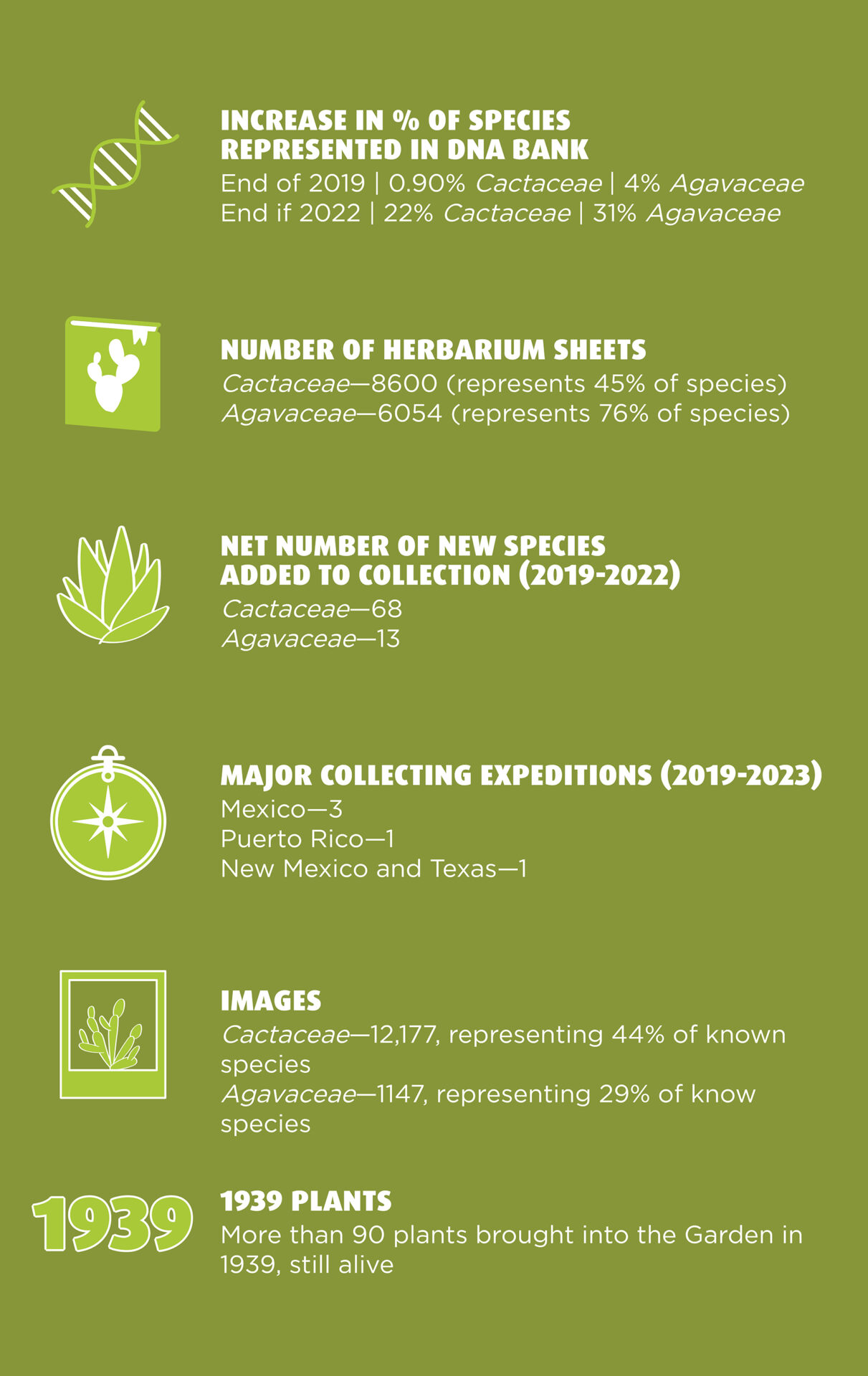Every botanical garden has an origin story. The story tells how the garden came to be where it is, the passions of the founders, the purpose for its being and the original plants.

Desert Botanical Garden’s origin story also includes the serendipitous recruitment of its first director. George Lindsay, a young scientist at the very outset of what became a storied career, agreed to lead the Garden for its first year, only. But, in that single year he set the stage for a plant collection that has grown in size, stature, renown and that continues to serve the Garden’s mission pillars, “education, research, exhibition and conservation of desert plants.”


Two botanists make significant contributions to cactus and agave collections
Dr. Howard Scott Gentry joined the Garden’s research department in 1971 after an already lengthy career exploring plants for the USDA through North and Central America, South Asia, and part of Africa, and before that studied the diversity of plants and animals in Mexico and the U.S. Southwest. At the Garden, Gentry spent over a decade focused on the genus Agave, culminating in publication of “Agaves of Continental North America,” touted as “an indispensable guide to agaves.” He expanded the Garden’s agave collection during this time and realized a goal suggested by the superintendent of the Huntington Gardens in California to George Lindsay— to build an extensive collection of agaves from which a monograph of the genus might be published.
Gentry made another significant contribution to the Garden … he hired Wendy Hodgson to illustrate his book about agaves. Wendy has been with the Garden for 50 years since and has become a preeminent botanist in her own right, and an expert in the agave family. Dr. Edward (Ted) Anderson joined the Garden’s research department in 1992 as senior research botanist. He was regarded as “one of the greatest students of Cactaceae of the 20th century.” Anderson’s magnum opus, “The Cactus Family” was published just weeks before his death in 2001. A treasure trove of valuable scientific information on cactus, including more than 10,000 slides of cactus in the wild, were left by Anderson to the Garden. Hundreds of cactus collected by Anderson are still alive in the Garden today.

National Collections
In 2010, with 70 years of additions, including the contributions by Anderson and Gentry, the Garden’s cactus and agave family living collections were already highly regarded as amongst the most impressive in the world. The validity of that status was then formalized when National Collection status was conferred by what was then the North American Plant Collections Consortium (now the Plant Collections Network), part of the American Public Gardens Association. This designation recognizes the Garden’s long commitment to these plant families, the horticultural care and propagation of these plants and the maintenance of accurate accessions records. As part of holding accredited collections, the Garden makes plant material available for taxonomic studies and many other types of research.

Echinocereus engelmannii seedlings
A Bold New Goal
The Garden set a a bold new goal in its most recent strategic plan, published in 2019. The objective is to build the most complete collections of the cactus and agave families. The plan is to have all the known species of these families as living plants in the Garden, as well as herbarium specimens, seed collections, images and DNA samples. The pandemic slowed progress on the goal, but staff continued the pace again in 2022 with a collecting expedition to Mexico. The work hasn’t stopped since.
Take a look at some of the accomplishments:

